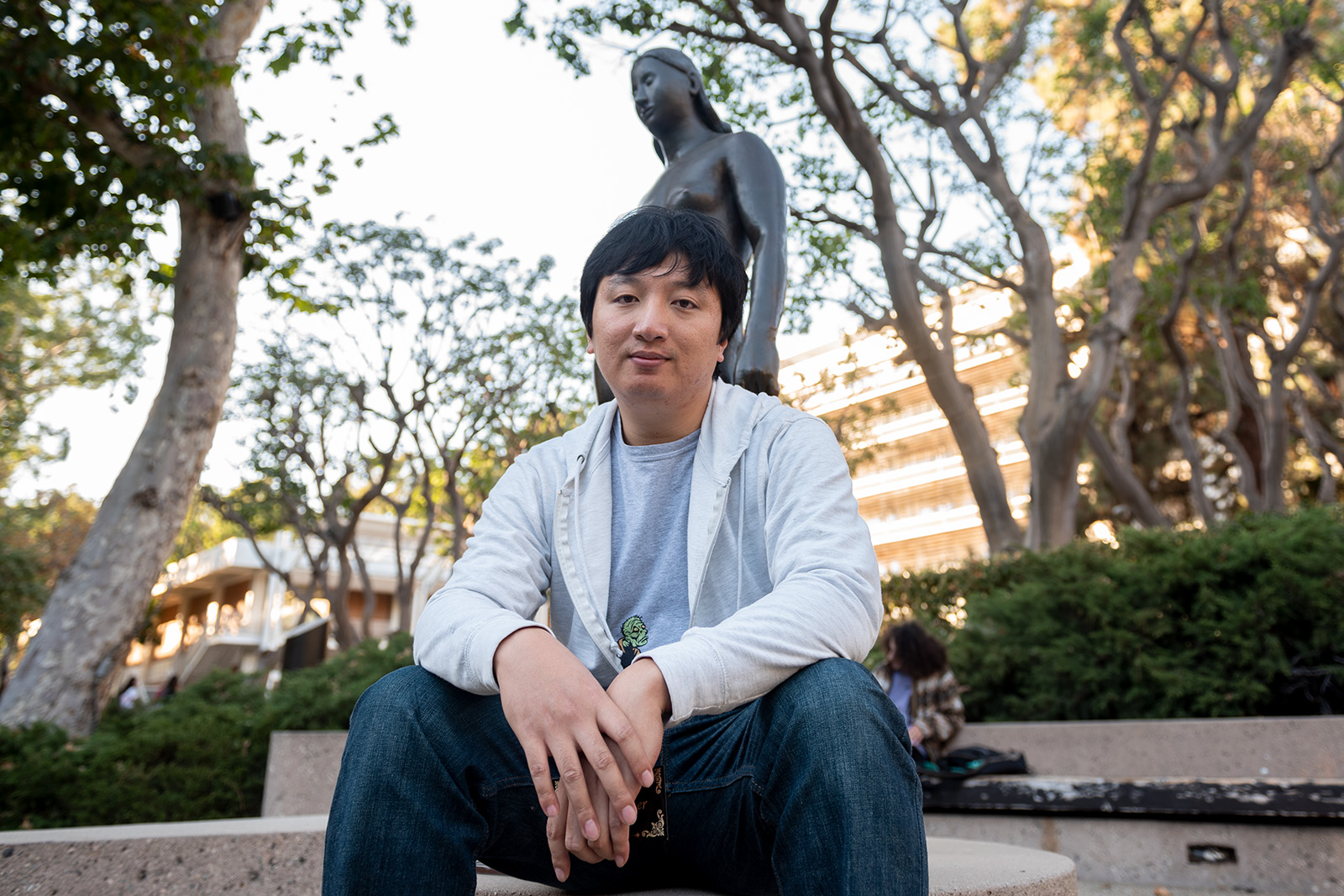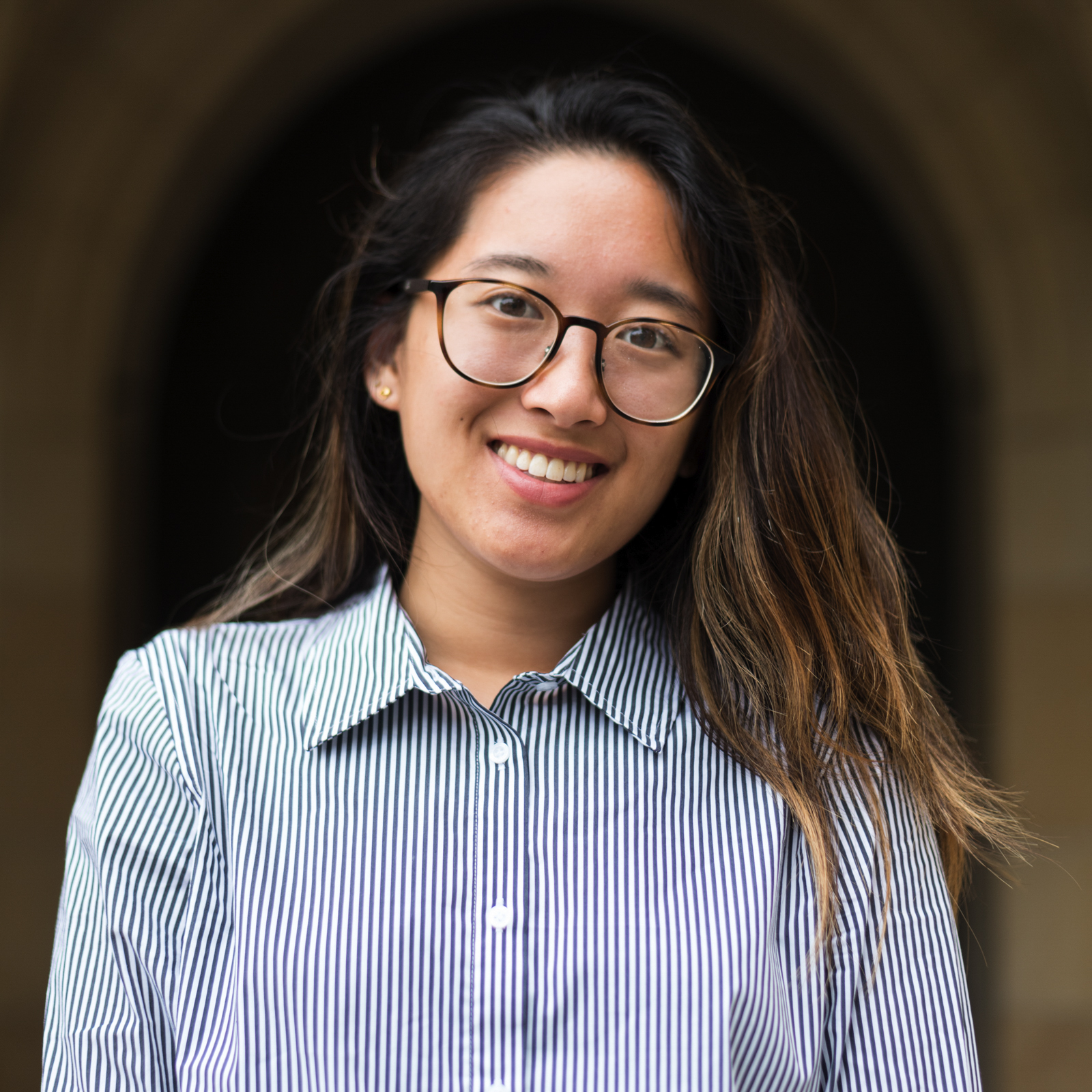Graduate student to direct ‘Romeo and Juliet’-based short film in sculpture garden

Graduate student Zhou Ye is working on his upcoming short film, “Roman and Julie,” which is inspired by both William Shakespeare’s classic love story “Romeo and Juliet” and UCLA’s Franklin D. Murphy Sculpture Garden. (Axel Lopez/Daily Bruin senior staff)

By Paige Hua
Nov. 4, 2019 10:44 p.m.
In a space that was once used for comedy, Zhou Ye set out to reimagine a classic tale of star-crossed lovers.
Ye, a graduate student in the UCLA School of Theater, Film and Television, will begin directing his first film of the quarter. The short, “Roman and Julie,” was in part inspired by the classic love story “Romeo and Juliet,” but also by Ye’s desire to create a tragic love story in a setting that students typically utilized for comedies.
“I walked around in that garden, thinking about what story I could tell,” Ye said. “The film they made last year in the sculpture garden was a comedy, but I didn’t quite like that style. I wanted a beautiful, tragic love story.”
[Related: Characters redefine home following friend’s death in original student musical]
The love story centers around Roman, who goes to the Franklin D. Murphy Sculpture Garden to mull over memories of his ex-girlfriend, Julie. When deep in thought in front of one of the sculptures, Julie appears, and the lovers reunite, but the moment is fleeting. Playing around with memory and reality, Ye said Roman hallucinates his vision of Julie, who has already passed away. The sculpture Roman stands in front of is meant to be one of the last pieces Julie, an artist, made, Ye said.
But how the flashes of memory visually distinguish themselves from reality is a much more technical matter, Ye said. As a director, he said he uses a much smaller aperture on the camera to depict Roman’s reality to make the world seem clearer. This contrasts with the larger aperture used during the memory scenes, which allows light to flood into the lens and blur the focus.
“These elements are all hints that Roman is not in the same place as he was in the beginning of the film,” Ye said. “It implies to the audience that there exist these two different worlds.”
Ye, however, is only one part of the machine creating these worlds, since cinematographer Justin Garza, another MFA directing student, has more control over the composition of the scenes. For Garza, one of his primary challenges is the lack of control over sound and lighting in the sculpture garden.
With an external set, Garza said the noise of passersby will be an element to contend with. Furthermore, as UCLA’s film school has supplied them with a specific time frame to finish shooting, he said the crew will have to work with what they’re given to provide the actors with backlight, setting a glowing, warm tone. These artistic elements eventually will culminate in the romantic, yet tragic vision he and Ye have discussed at length.
“Ultimately, it’s the director’s say,” Garza said. “But he looks at my creative vision as well, and I issue that structure down to the gaffers and key grips.”
[Related: Graduate students interpret “Romeo and Juliet” with modern, inclusive twist]
But beyond the people that Garza works with, there is an even larger army of students involved in producing even a three-minute short film, said Danielle Criqui, a graduate film student and Ye’s assistant director. Criqui said her role is to oversee the logistics on set, from the actors to the directors and down to even the production assistants. Spending much of her time in meetings, Criqui said her main concern for filming is the time the cast and crew will be allotted to film the short.
Criqui said she is always looking at the shotlist, figuring out how they will move people around the three locations within the sculpture garden given their four-hour time constraint. Since Ye plans on incorporating a dolly into his filming technique, Criqui has to make sure they are setting aside the 20 minutes it takes to set up the equipment in the exact place the director wants it.
“You’re taking a puzzle and chopping it all up and then trying to put it back together,” Criqui said. “It’s not sequential.”
The short film will have to be put back together in the editing room, when Ye can reorder the cuts into a linear storyline. But as this is happening, Garza said the students will be rotating roles and participating on the set of another classmate’s short film. While the filming occurs within a learning environment, Criqui said the production atmosphere for all student films is still a professional one.
“In the end, it is just a three-minute film,” Criqui said. “But who knows if we’re ever going to want to look at it again a year later. … It is very much so being treated like a professional production.”

